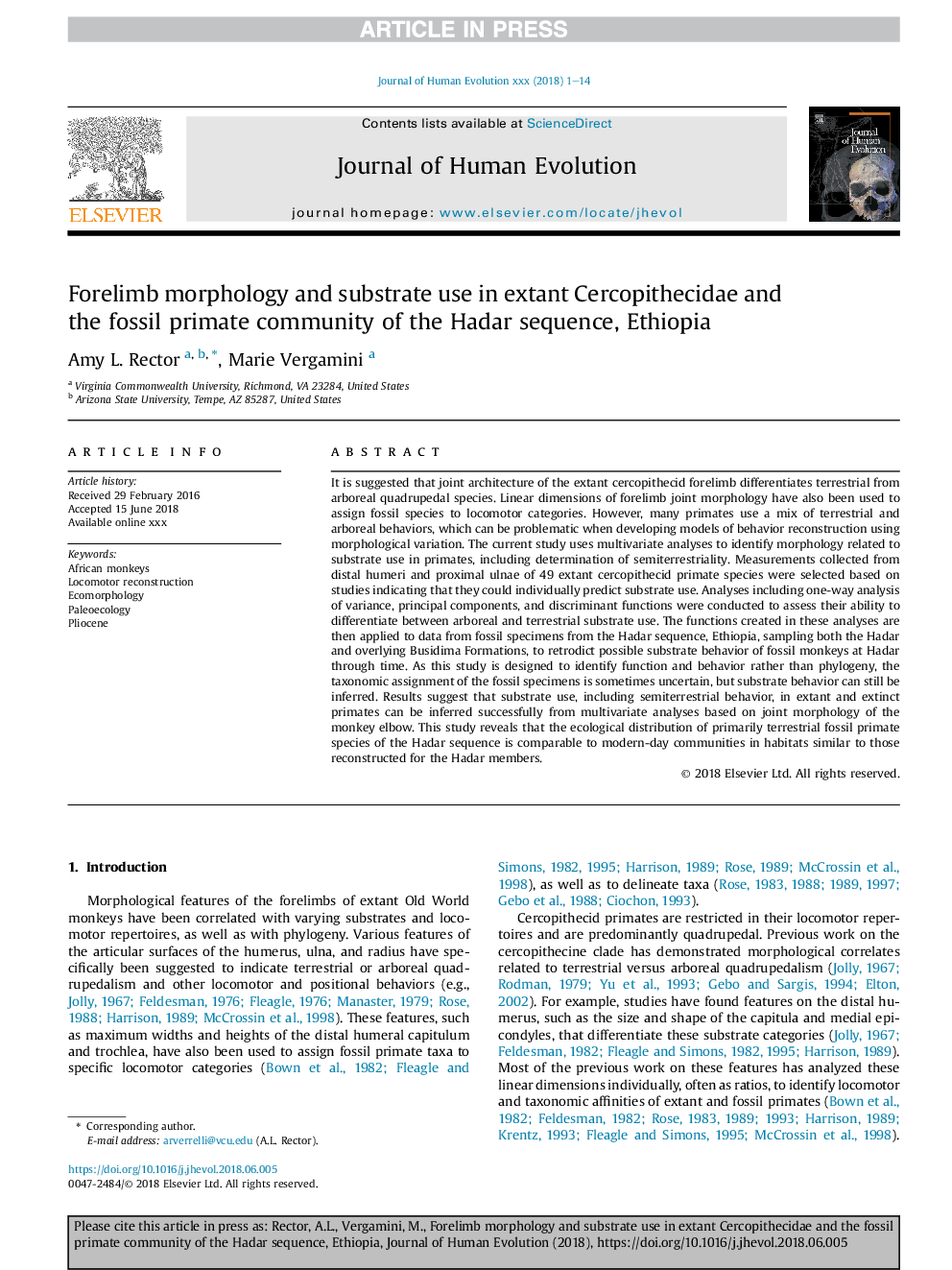| کد مقاله | کد نشریه | سال انتشار | مقاله انگلیسی | نسخه تمام متن |
|---|---|---|---|---|
| 8959445 | 1646318 | 2018 | 14 صفحه PDF | دانلود رایگان |
عنوان انگلیسی مقاله ISI
Forelimb morphology and substrate use in extant Cercopithecidae and the fossil primate community of the Hadar sequence, Ethiopia
دانلود مقاله + سفارش ترجمه
دانلود مقاله ISI انگلیسی
رایگان برای ایرانیان
موضوعات مرتبط
علوم زیستی و بیوفناوری
علوم کشاورزی و بیولوژیک
بوم شناسی، تکامل، رفتار و سامانه شناسی
پیش نمایش صفحه اول مقاله

چکیده انگلیسی
It is suggested that joint architecture of the extant cercopithecid forelimb differentiates terrestrial from arboreal quadrupedal species. Linear dimensions of forelimb joint morphology have also been used to assign fossil species to locomotor categories. However, many primates use a mix of terrestrial and arboreal behaviors, which can be problematic when developing models of behavior reconstruction using morphological variation. The current study uses multivariate analyses to identify morphology related to substrate use in primates, including determination of semiterrestriality. Measurements collected from distal humeri and proximal ulnae of 49 extant cercopithecid primate species were selected based on studies indicating that they could individually predict substrate use. Analyses including one-way analysis of variance, principal components, and discriminant functions were conducted to assess their ability to differentiate between arboreal and terrestrial substrate use. The functions created in these analyses are then applied to data from fossil specimens from the Hadar sequence, Ethiopia, sampling both the Hadar and overlying Busidima Formations, to retrodict possible substrate behavior of fossil monkeys at Hadar through time. As this study is designed to identify function and behavior rather than phylogeny, the taxonomic assignment of the fossil specimens is sometimes uncertain, but substrate behavior can still be inferred. Results suggest that substrate use, including semiterrestrial behavior, in extant and extinct primates can be inferred successfully from multivariate analyses based on joint morphology of the monkey elbow. This study reveals that the ecological distribution of primarily terrestrial fossil primate species of the Hadar sequence is comparable to modern-day communities in habitats similar to those reconstructed for the Hadar members.
ناشر
Database: Elsevier - ScienceDirect (ساینس دایرکت)
Journal: Journal of Human Evolution - Volume 123, October 2018, Pages 70-83
Journal: Journal of Human Evolution - Volume 123, October 2018, Pages 70-83
نویسندگان
Amy L. Rector, Marie Vergamini,